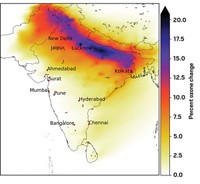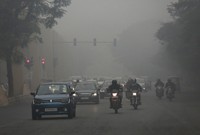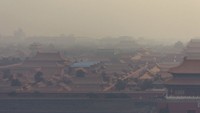Advertisement
Grab your lab coat. Let's get started
Welcome!
Welcome!
Create an account below to get 6 C&EN articles per month, receive newsletters and more - all free.
It seems this is your first time logging in online. Please enter the following information to continue.
As an ACS member you automatically get access to this site. All we need is few more details to create your reading experience.
Not you? Sign in with a different account.
Not you? Sign in with a different account.
ERROR 1
ERROR 1
ERROR 2
ERROR 2
ERROR 2
ERROR 2
ERROR 2
Password and Confirm password must match.
If you have an ACS member number, please enter it here so we can link this account to your membership. (optional)
ERROR 2
ACS values your privacy. By submitting your information, you are gaining access to C&EN and subscribing to our weekly newsletter. We use the information you provide to make your reading experience better, and we will never sell your data to third party members.
Pollution
Pollution controls explain rising ozone levels in China
A rapid drop in particulate emissions has had unexpected consequences
by Katherine Bourzac
January 7, 2019
| A version of this story appeared in
Volume 97, Issue 1

Since China instituted regulations on particulate matter and other air pollution in 2013, summer surface ozone levels have continued to rise. Now researchers believe they know why: cuts in particulate emissions changed the local air chemistry, allowing ozone-producing radicals to accumulate (Proc. Natl. Acad. Sci., U.S.A. 2018, DOI: 10.1073/pnas.1812168116). From 2013 to 2017, ozone levels in major urban areas in eastern China rose by 5 to 10%, says Daniel Jacob, an atmospheric chemist at Harvard University. Through computer-modeling experiments, he and researchers at Nanjing and Tsinghua Universities have now found an unexpected connection between ozone and airborne particles that are 2.5 µm and finer, called PM2.5. Thanks to regulations, emissions of these particles—which have adverse health effects—have declined rapidly in the country, falling by 40% from 2013 to 2017. The team’s models suggest that these particles can sponge up free radicals that play a key role in ozone production. China’s regulations lowered these radical-sopping particles but didn’t control emissions of the volatile hydrocarbons that react with radicals to form ozone. Together, Jacob says, this seems to have been a recipe for rising ozone levels.





Join the conversation
Contact the reporter
Submit a Letter to the Editor for publication
Engage with us on Twitter